All apologies to other areas of the country, but a strong case can be made that Philly golf is the best. Not only did it produce John McDermott and the Philadelphia School of golf course architecture, but it seems that you can’t drive a mile without passing a world class golf course. Philadelphia’s 25th best course would be top 5 in almost every other city in America.
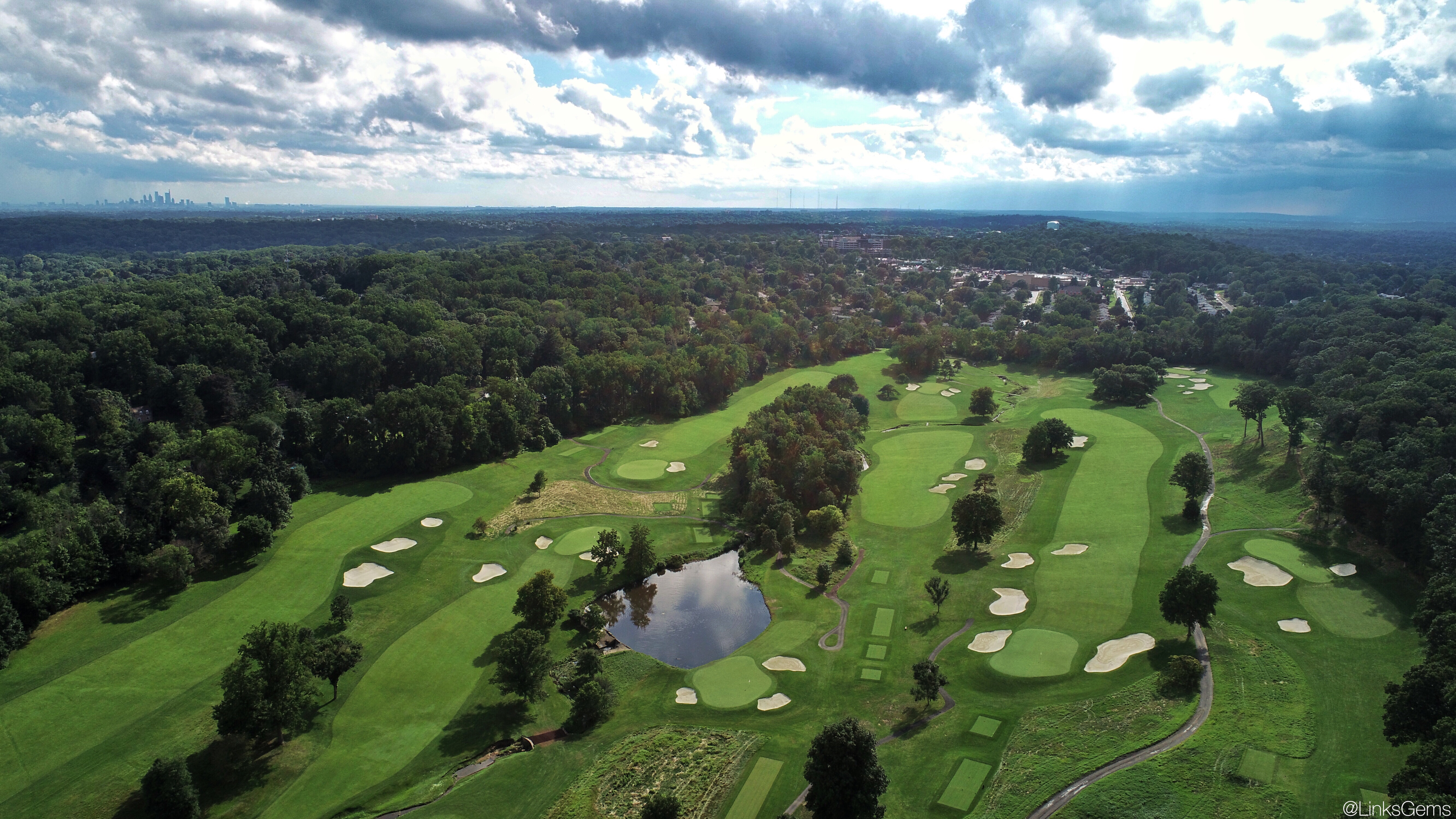
A high aerial of HVCC - Photo Credit: Jon Cavalier
Take William Flynn’s Huntingdon Valley Country Club, for example. Imagine being in your car, heading through the suburbs, and you decide to avoid traffic with a backroads maneuver that finds you on Paper Mill Road. “What the heck is that place?!”, you exclaim upon seeing HVCC spread out across the valley below. That kind of experience happens often in Philadelphia. Friend of The Fried Egg Jon Cavalier made a return visit to Huntingdon Valley after ten years. In the interim, architect Andrew Green got his hands on the course and tuned it up. Jon was impressed, and both he and Andrew agreed to share their thoughts to help prove the broader case – courses like HVCC make Philly the best.
Andrew is effusive in his praise for the architect of Huntingdon Valley. “There is little that I don’t find amazing about William Flynn. He was a visionary and way ahead of his time. His articles on architecture in 1927 speak clearly to the “elusive pill”, forward tee usage, cost of maintenance, the value of strategy, and the use of the ground. They are wonderful! He did not do a ton of work compared to some of his contemporaries, but I have seen little evidence that any of his work was sub-par.
I love his use of width and angles – may be the best to ever employ that architectural concept. Every green complex presents a new challenge for getting into the best position to attack. The true brilliance is how he created these golfing problems and left ways for every player to negotiate them with their skill, no matter the level of that skill. I have on the back of my business card:
‘The best way to whet the appetite and improve the game of any golfer is to offer an incentive and provide a reward for high class play, and by high class play is meant simply the best of which each individual is capable.’
LOVE IT! So simple but so right on.”
Jon concurs, as it relates to Huntingdon Valley. “It has taken me time and experience to fully grasp Flynn’s genius. The routing is a clear strength, which is funny, because previously I would have told you I didn’t love it. Now that I have gotten much more into golf course architecture, I love the front nine outside / back nine inside loops. The greens are also exceptional. Super interesting and varied, with lots of great hole locations.”
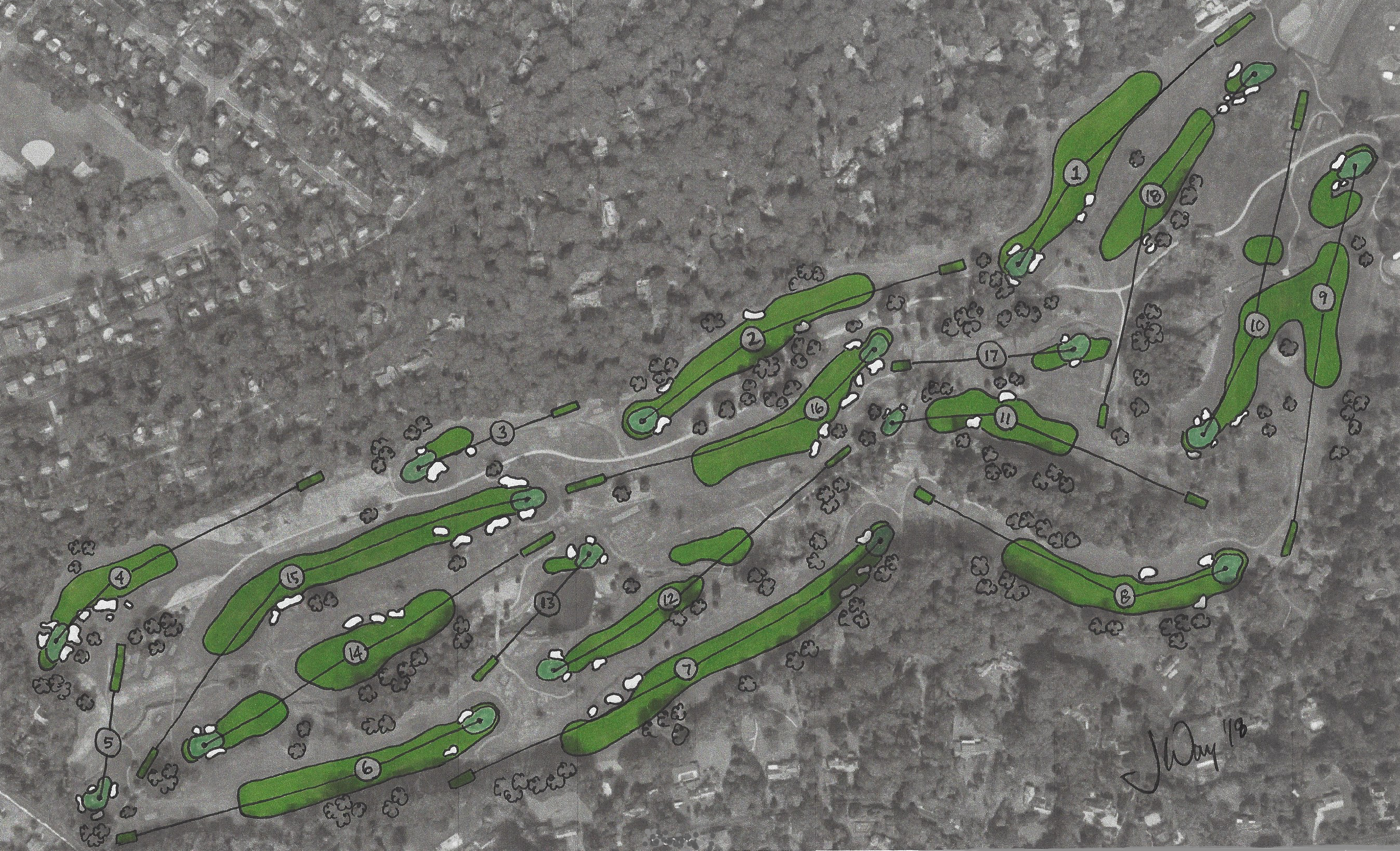
A sketch of HVCC's routing
“Huntingdon Valley is a masterpiece,” Andrew continues. “Not only in its very cool routing inside a narrow valley, but its vibe, its style of play, and its authentic Flynn experience. A great deal of that is owed to Scott Anderson, the golf course Superintendent, and the membership. The golf course is not lush and green. It is firm, fast and amazing. They trade modern turf advances for old world proven concepts where the soil is managed as much as the grass. It produces fairways that run and lies that are clean and tight. The greens have some grain, but it does not impact green speed or quality – the grain might actually enhance it.”
“You have to know how to golf your ball to play Huntingdon Valley well and I have loved it ever since my first round there over a decade ago. The routing provides this cool outside inside setup where the front nine plays counter-clockwise around the perimeter of the property. The back nine then rests clockwise inside the front. This sets up an amazing variety of holes, directions, and lies. The greens are wonderful and the bunkers fit the strategy of the holes beautifully.”
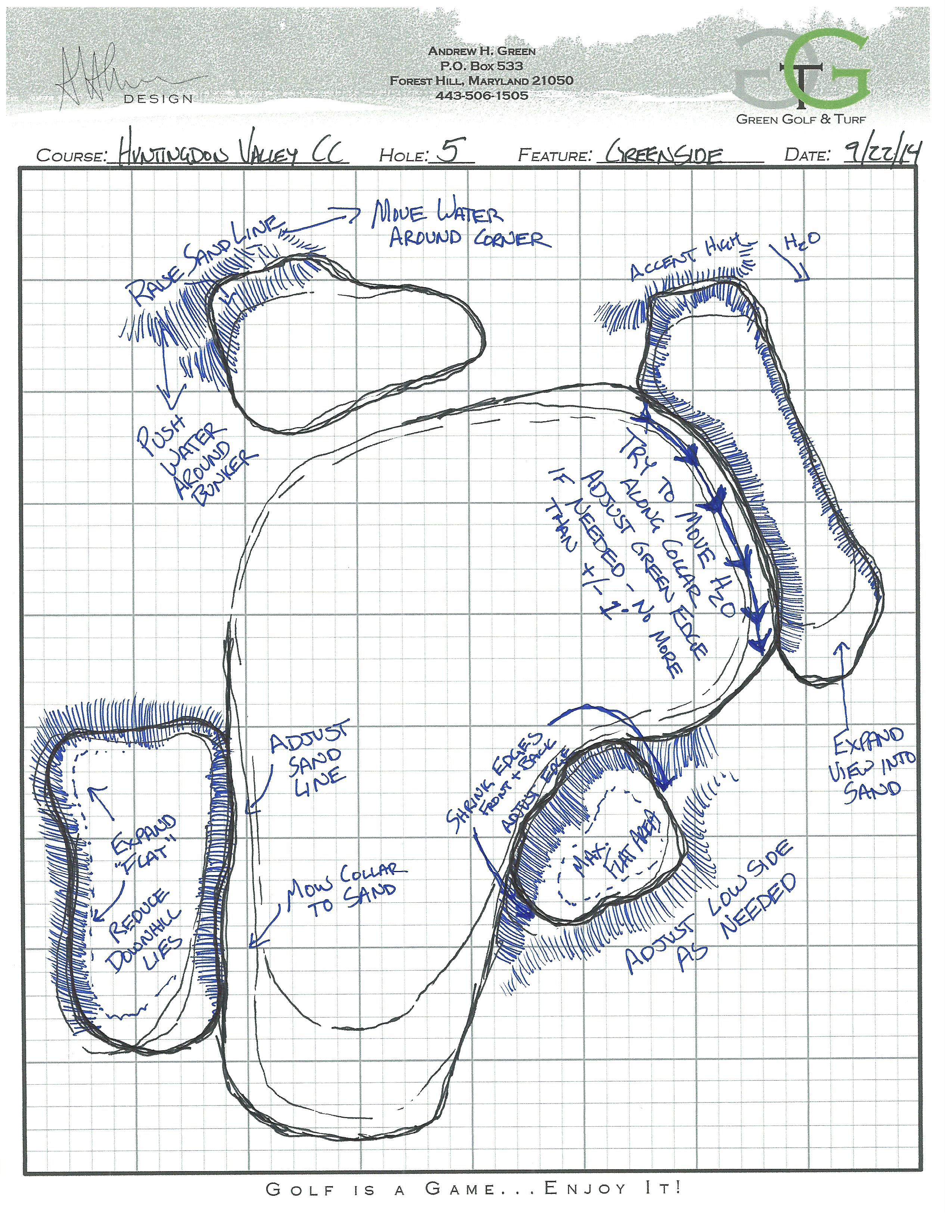
Andrew Green’s sketch of the 5th hole at HVCC
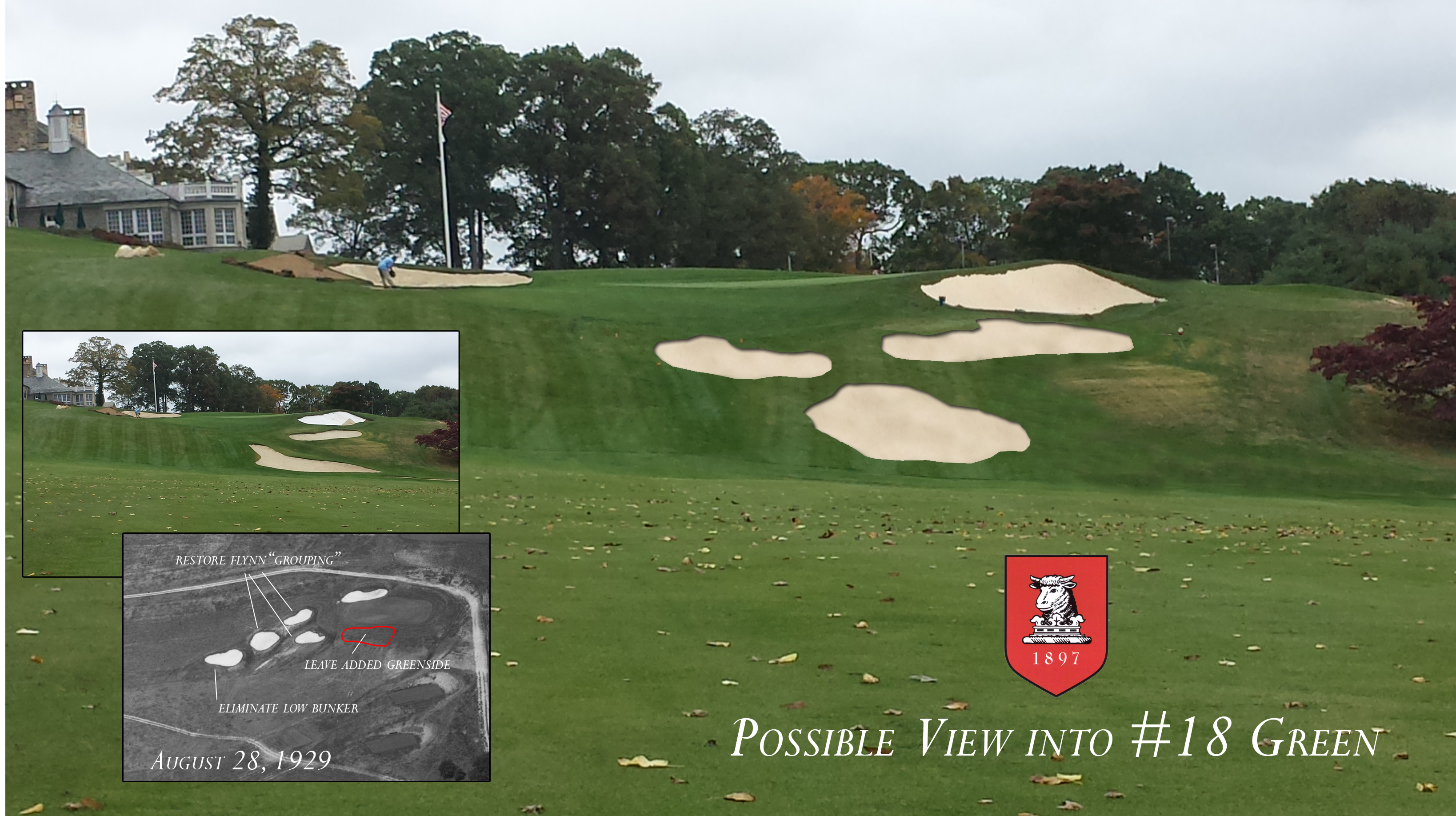
Andrew Green’s rendering of the 18th green at HVCC
Regarding the gradual restoration of HVCC, Andrew shares insights on his work. “Our key restoration goal was to walk lightly. The only broken aspect of the course was the over-planting of trees on a number of holes. Tree work began even before I was engaged and I worked with the Club to find their best trees, eliminate the failing ones, and open sightlines they had been missing. There is still some ongoing work we need to complete.
The bunkers were restored with a very light hand. Grass had been brought down the faces over time. Many bunkers, therefore, were only re-edged to their original shape and size. A few had to be totally reshaped, and a few that were previously eliminated were brought back. We also resurfaced and improved all the tees, added some drainage, and widened some fairways. Overall this project reminded me of an archeologist brushing the dust off ancient pottery, not an artist trying to recreate a replica. We still have some green modifications to work on, including some restoration of the redan qualities on the 3rd green that were lost a number of years ago.”
To illustrate the impact of Andrew’s polishing, take the par-3 13th. New tees refresh the challenge of Flynn’s hole, with the left bunker providing better aesthetics and intimidation, and tree removal dramatically enhance vistas and scale.
-
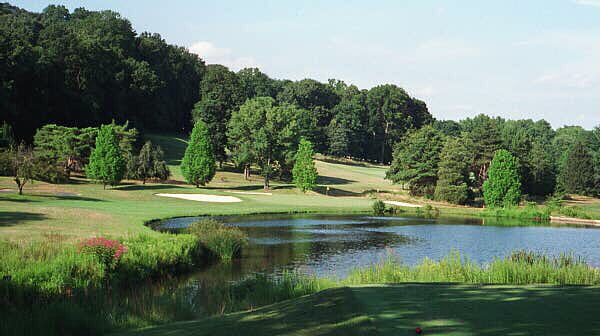
The 13th before
-
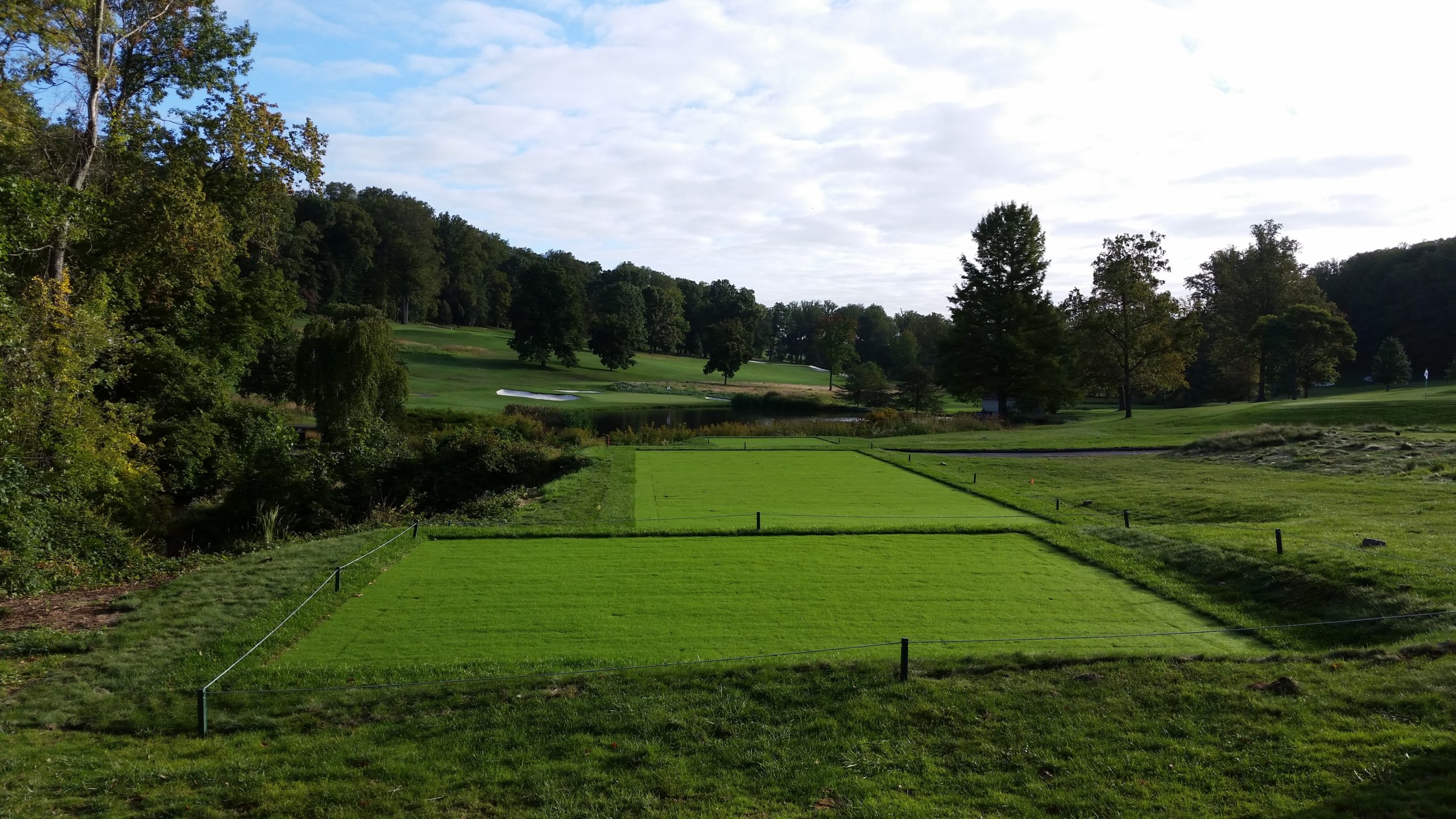
New back tees growing in
-
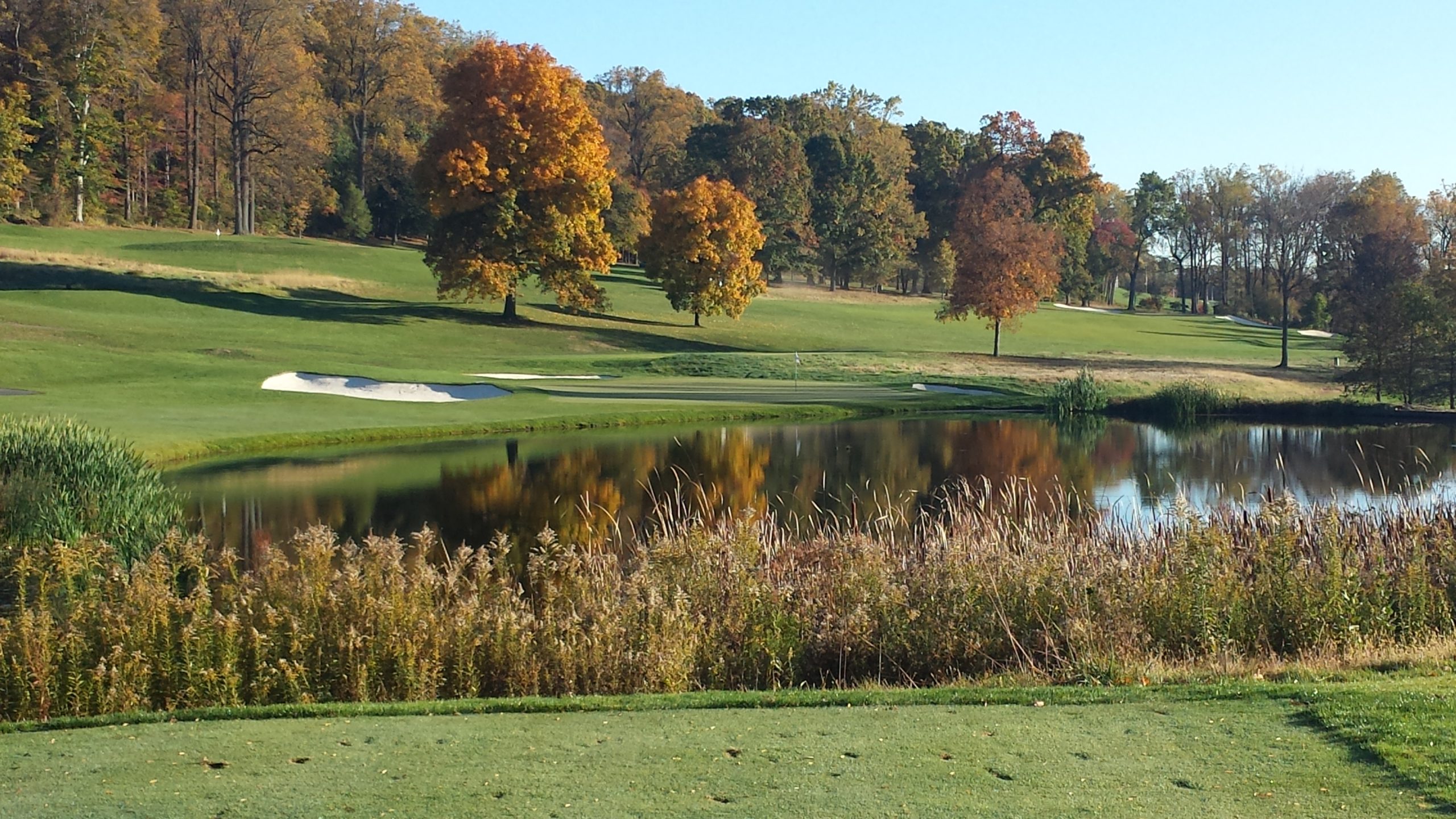
The 13th after restoration
As Andrew notes, work at Huntingdon Valley was not confined to the Toomey/Flynn nines on the “main” course. “The C Nine (called the Nine Hole Course on Flynn’s plan) was modified some to try to better respect Flynn and make it more playable for all. Those nine holes may be the toughest in the entire Philadelphia region. The holes had been fallow for many years following the depression and WWII. Ron Prichard did a nice job of bringing many of the holes back in the 1990s. A few holes could not be restored due to environmental regulations and the new driving range. We worked to incorporate more original vision into those ‘new’ holes, including adjusting the starting point of the nine to make more sense to traffic flow and move the hardest holes to the middle of the nine instead of the start. Those changes have been well received.”
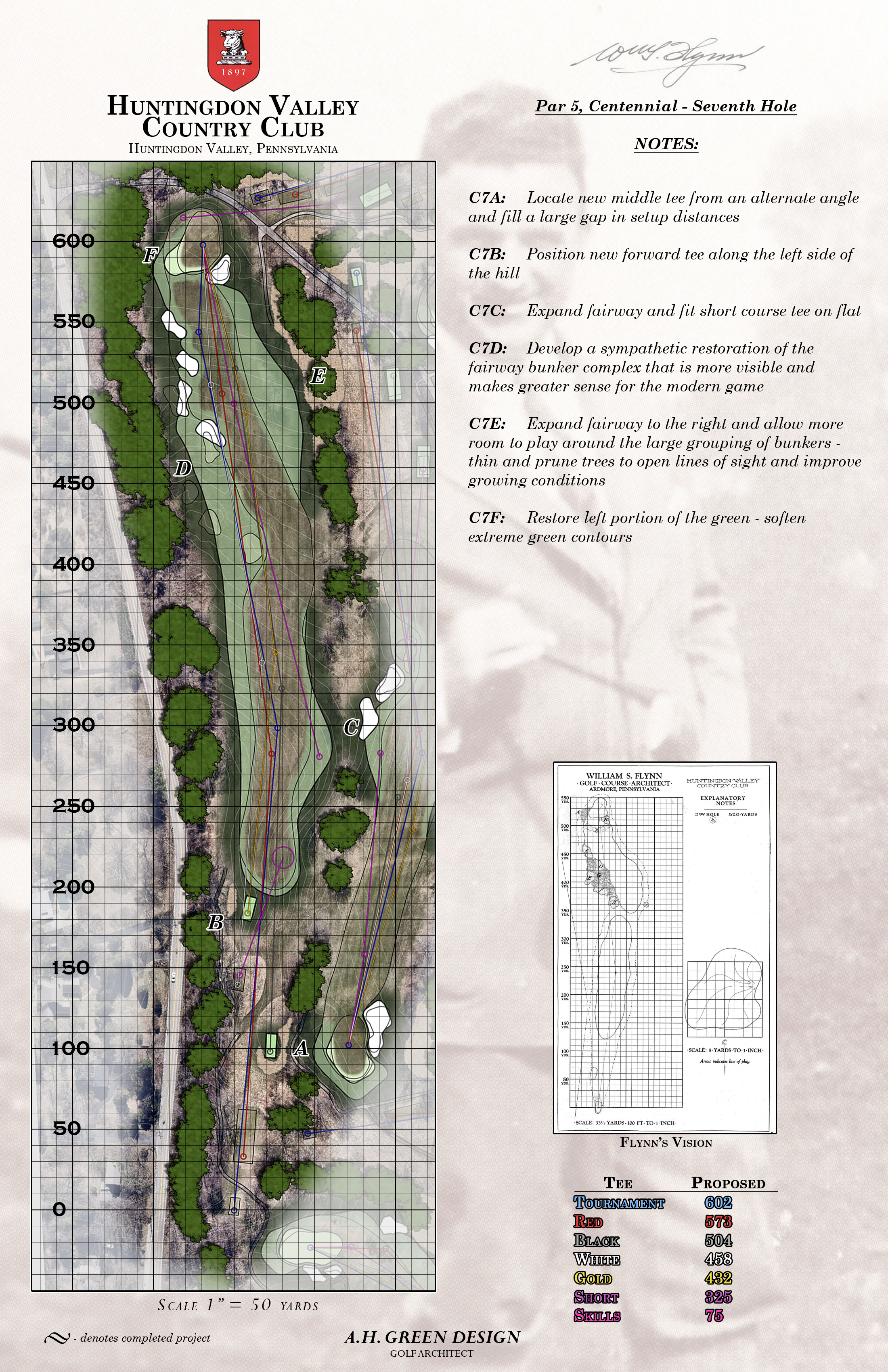
Andrew Green’s plan for the 7th
“I feel the membership and all those who have played Huntingdon Valley in the last few years have seen the improvement, without even realizing the extent of the work that was completed,” Andrew concludes. “If you played it on a regular basis the progress was almost imperceptible. If you had not been on the property for ten years, it is quite stunning. I think the golf course continues to hold a special reputation for being authentic and real. It is a very fun golf course that will test your abilities.”
The fine tuning of Flynn’s masterpiece continues on. The membership is happy with Andrew’s work, and even well-travelled guests like Jon Cavalier are blown away. Jon closes his argument for the strength of HVCC and Philly golf with his favorite holes – the strong par-4s nearest the clubhouse, #1, #9, #10, #18. Case closed.
-
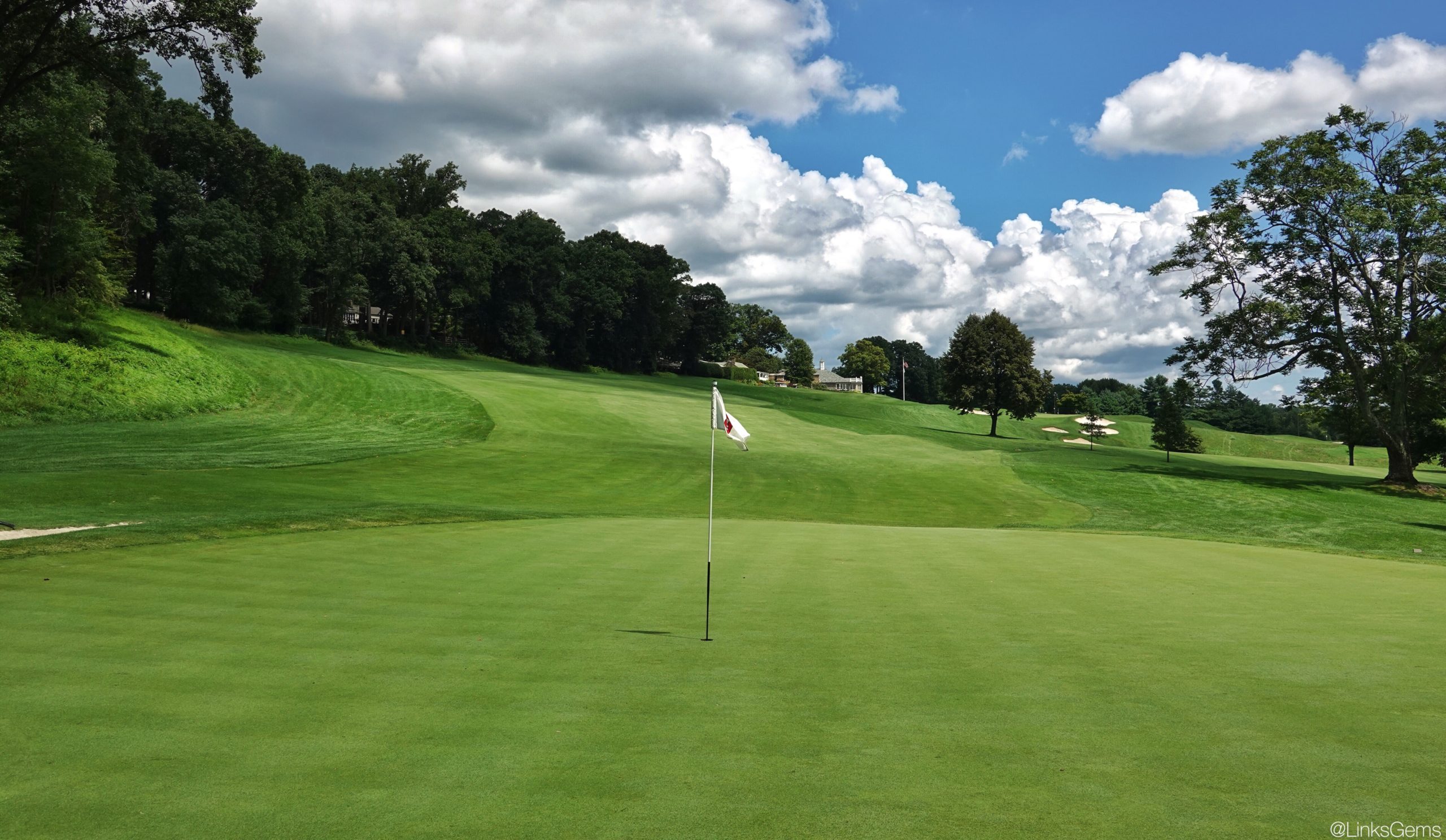
The look back from the 1st green - Photo Credit: Jon Cavalier
-
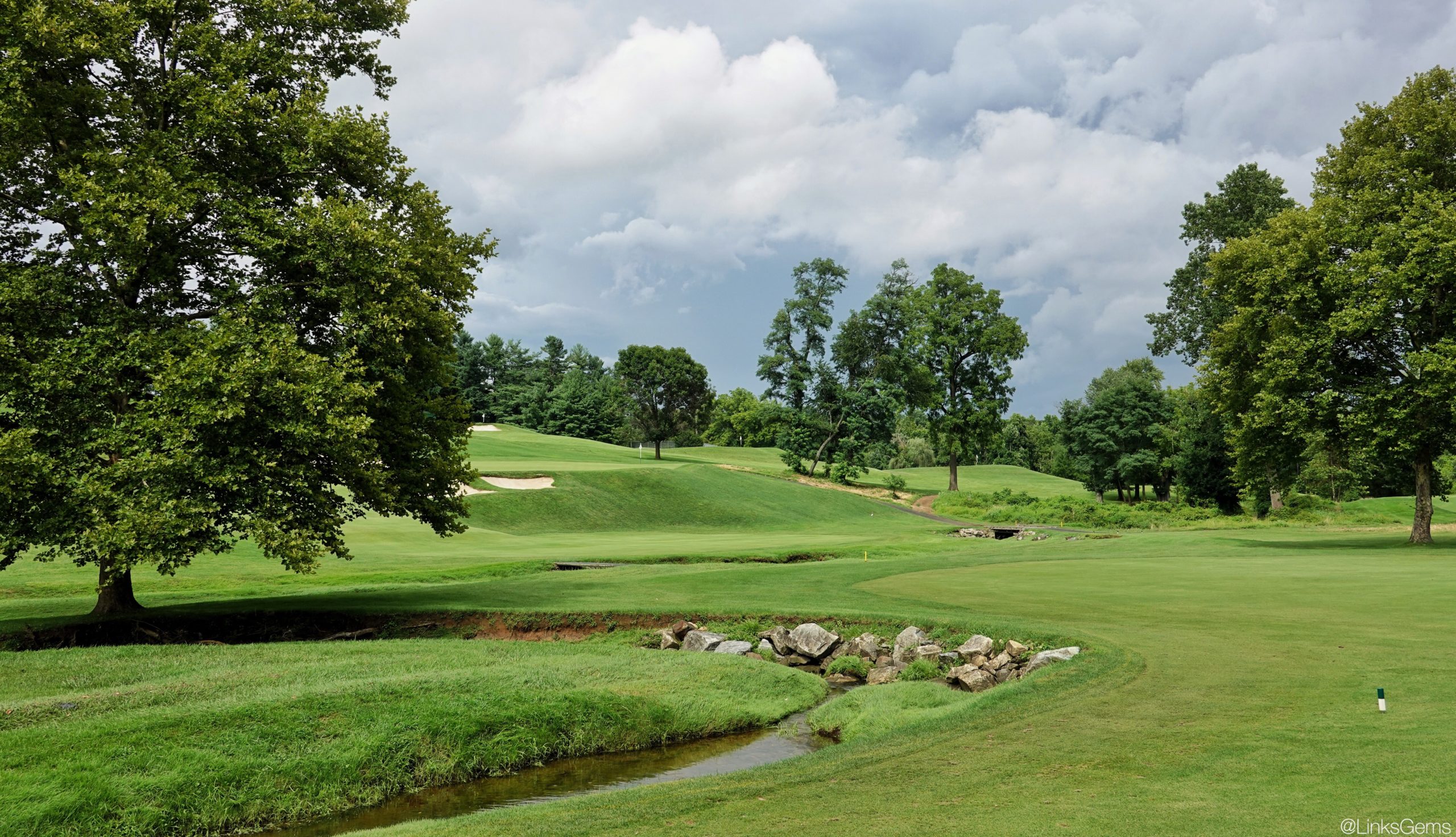
The approach to the 9th - Photo Credit: Jon Cavalier
-
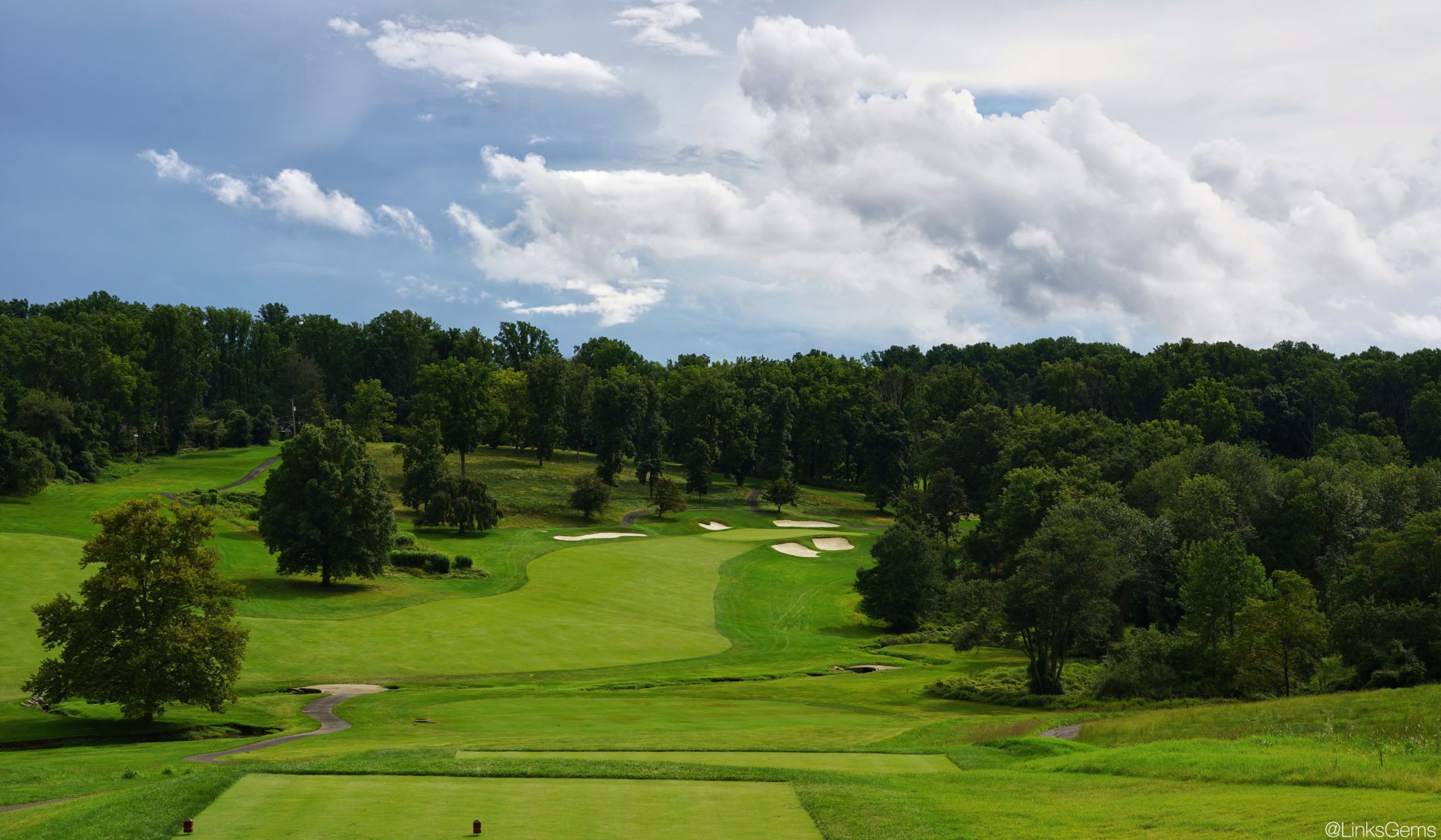
From the 10th tee - Photo Credit: Jon Cavalier
-
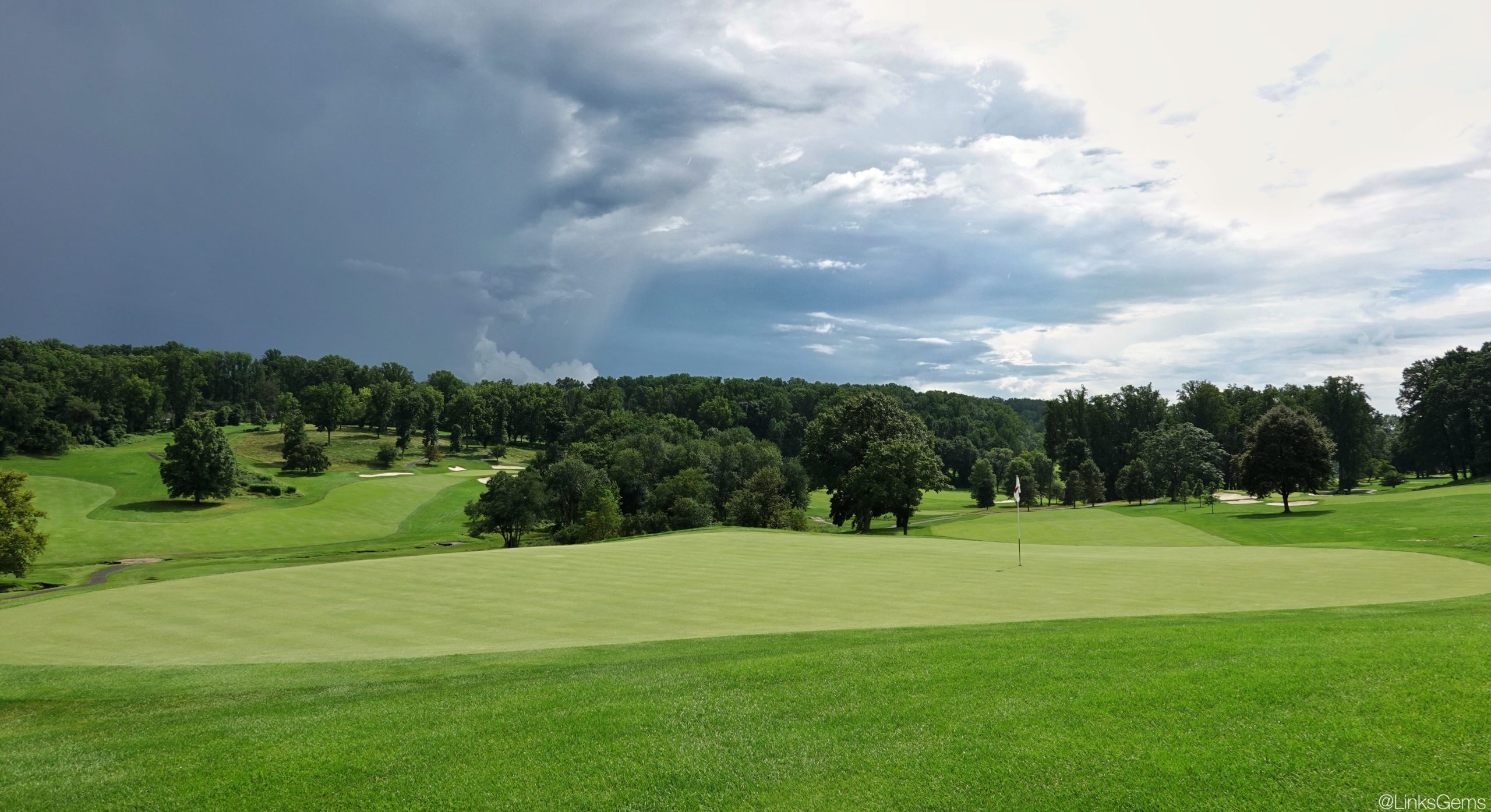
The 18th green back across the valley - Photo Credit: Jon Cavalier


 by
by 
